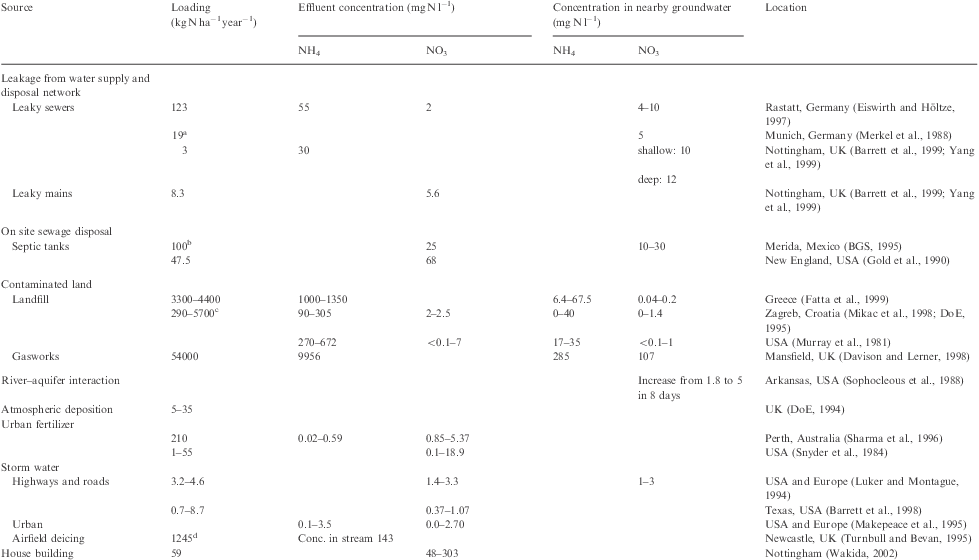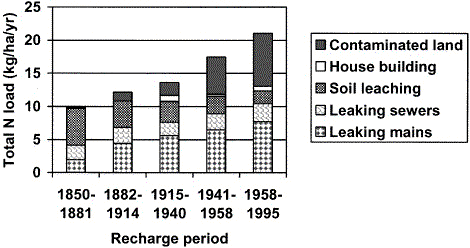
a Assuming a concentration of 80
mg N l-1, similar to the concentration of the sewage
of Rastatt, Germany (Eiswirth and Holtze(oの頭に¨), 1997).
b The loading was calculated using an estimated recharge
and nitrate concentration of 400 mm year-1 and 25
mg NO3-N Loading rates
based on a observed loss of 9.5 kg year-1 from a three-person
home and a density of five homes ha-1.
c All the data, except the loading values, are from
(BGS, 1995). The loading values were calculated using the minimum
and maximum leachate production estimated in (Gold et al., 1990)
(3200 and 18,592 m3 year-1) and the mean
NH4 concentration in
the leachate. It must be stressed that these values can be very
different to those observed due to the different conditions used
(rainfall, waste density, landfill age, etc).
d Application rate in the winter 1991/92. Nowadays
urea based de-icer is not used in commercial airports in the
UK.
〔Wakida,F.T. and Lerner,D.N.(2005): Non-agricultural sources of groundwater nitrate: a review and case study. Water Research, 39, 3-16.から〕
